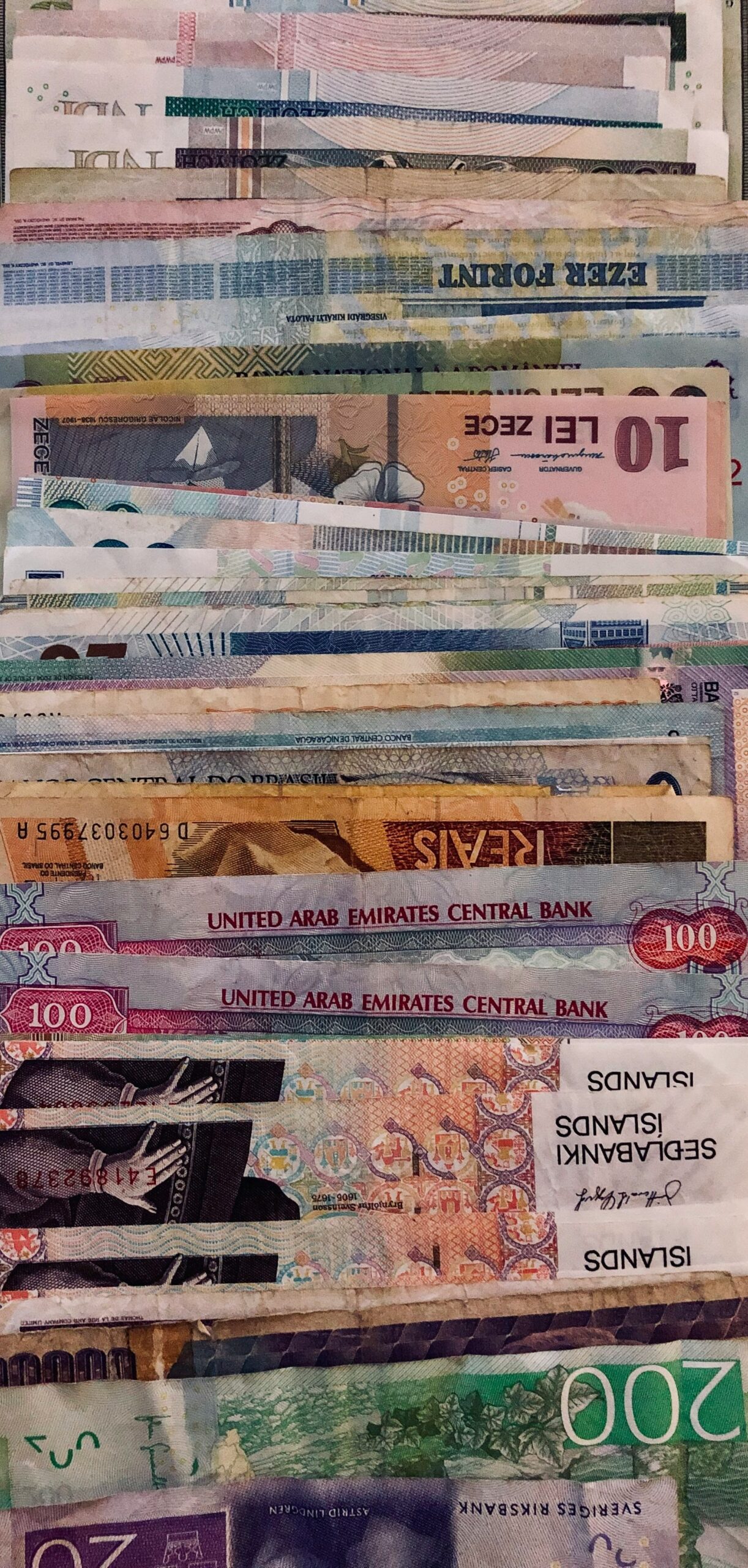Your cart is currently empty!

The Rise and Impact of Peer-to-Peer (P2P) Payments
Introduction to Peer-to-Peer (P2P) Payments
Peer-to-peer (P2P) payments represent a significant evolution in the landscape of financial transactions, enabling individuals to transfer funds directly to one another through digital platforms. Unlike traditional payment methods, which often require intermediaries such as banks or financial institutions, P2P payments leverage technology to facilitate seamless and instant monetary exchanges.
The concept of P2P payments has its roots in the early days of the internet and digital banking. As online commerce began to flourish, the need for more efficient, user-friendly payment solutions became apparent. Initially, online transactions heavily relied on credit card processing and bank transfers, which were often cumbersome and time-consuming. The emergence of platforms like PayPal in the late 1990s marked a pivotal moment, simplifying online payments and laying the groundwork for P2P payment systems.
With advancements in mobile technology and the proliferation of smartphones, P2P payments have become increasingly accessible and popular. Modern P2P payment apps, such as Venmo, Zelle, and Cash App, allow users to send and receive money with just a few taps on their mobile devices. These platforms typically link to users’ bank accounts, credit cards, or digital wallets, enabling quick and secure transactions without the need for physical cash or checks.
One of the key differences between traditional payment methods and P2P payments is the elimination of intermediaries. Traditional methods often involve multiple steps and entities, which can introduce delays and additional fees. In contrast, P2P payments streamline the process, providing near-instantaneous transfers and reducing costs. This efficiency has made P2P payments particularly appealing for personal transactions, such as splitting bills, reimbursing friends, or making small purchases.
Overall, the rise of P2P payments reflects a broader trend towards digitalization and convenience in financial services. By offering a fast, secure, and user-friendly alternative to traditional payment methods, P2P payments are reshaping how individuals handle their financial transactions in the digital age.
How P2P Payment Systems Work
Peer-to-Peer (P2P) payment systems have fundamentally transformed how individuals transfer money to each other, thanks to the advent of sophisticated technology and user-friendly platforms. The backbone of P2P payments is a network of mobile apps and online services that facilitate seamless transactions between users. Prominent examples include PayPal, Venmo, Cash App, and Zelle, each offering unique features but adhering to a similar operational framework.
The process begins with user registration, which generally involves downloading the P2P payment app or accessing the online service’s website. Users are required to create an account by providing personal information such as name, email address, and phone number. This is followed by the crucial step of linking a bank account or a digital wallet. Linking these financial instruments ensures that funds can be both deposited and withdrawn effortlessly, thereby integrating traditional banking with modern digital convenience.
Once registration and account linking are complete, users can initiate transactions. The process typically involves selecting the recipient from a list of contacts or entering their email address or phone number. Users then specify the amount of money to be transferred and, optionally, add a note or description for the transaction. Security features like multi-factor authentication and encryption are often employed to safeguard these transactions.
Upon initiating a payment, the system verifies the availability of funds in the sender’s linked account or digital wallet. If sufficient funds are available, the amount is debited, and the transaction is processed almost instantaneously. The recipient is notified and can either transfer the funds to their bank account or keep them within the app for future use. The entire process is designed to be swift and hassle-free, making P2P payments an attractive alternative to traditional methods.
In addition to basic money transfers, many P2P payment platforms offer additional features such as bill splitting, integration with social media, and even cryptocurrency transactions. This versatility and ease of use have contributed significantly to the popularity of P2P payment systems, marking a notable shift in how financial transactions are conducted in the digital age.
Popular P2P Payment Platforms
Peer-to-peer (P2P) payment platforms have revolutionized the way individuals transfer money, offering convenience, speed, and security. Among the most prominent platforms are PayPal, Venmo, Zelle, and Cash App, each offering unique features that cater to different user needs. Understanding the distinctions among these services can help users choose the platform that best suits their requirements.
PayPal, one of the oldest and most widely recognized P2P platforms, boasts comprehensive features, including international transfers, robust security measures, and buyer protection. Its user-friendly interface allows for seamless transactions, though it charges fees for certain transactions, such as cross-border transfers and credit card payments.
Venmo, owned by PayPal, is particularly popular among younger users due to its social media-like feed that allows users to share transaction details with friends. Venmo is typically used for domestic transfers and offers a straightforward, intuitive app. While it generally does not charge fees for bank transfers, transactions funded by credit cards incur a fee.
Zelle stands out for its integration with numerous U.S. banks, enabling users to send money directly from their bank accounts without the need for an additional app. Zelle offers near-instantaneous transfers and does not charge fees. However, its bank-centric model limits its availability to users without bank accounts that support Zelle.
Cash App by Square Inc. appeals to users with its simplicity and additional features like investing in stocks and Bitcoin. It offers free personal transfers, though business transactions and instant transfers to a debit card incur fees. Cash App’s user base is predominantly in the United States and the United Kingdom.
Geographic availability is a critical factor when choosing a P2P payment platform. While PayPal supports international transfers, Venmo, Zelle, and Cash App are primarily focused on U.S. users, with Cash App extending its services to the U.K. As these platforms continue to evolve, their geographic reach and feature sets are likely to expand, further enhancing the P2P payment landscape.
Benefits of P2P Payments
Peer-to-peer (P2P) payment systems have revolutionized the way individuals and businesses handle financial transactions. One of the primary advantages is the unparalleled convenience offered by these platforms. With just a few taps on a smartphone, users can transfer funds to friends, family, or vendors, eliminating the need for cash or physical checks. This ease of use is particularly beneficial in today’s fast-paced world where time is a precious commodity.
The speed of transactions is another significant benefit of P2P payments. Traditional banking methods can take several days to process, whereas P2P payments are typically instantaneous. This immediacy is invaluable in situations requiring urgent fund transfers, such as splitting bills at a restaurant or sending money to a loved one in need. Real-life examples highlight this efficiency; for instance, users of popular P2P apps like Venmo and PayPal often share stories of how quickly and effortlessly they can send and receive money.
Cost-effectiveness is also a noteworthy advantage. Many P2P payment platforms charge minimal or no fees for transactions, making them an attractive alternative to traditional banking services that often have higher costs. This financial accessibility democratizes the transfer of money, allowing more people to engage in digital transactions without worrying about excessive fees. User testimonials frequently praise the affordability of these services, further underscoring their appeal.
Enhanced security measures are another compelling benefit. P2P payment systems employ advanced encryption technologies to protect user data, ensuring that transactions are safe from cyber threats. This level of security fosters trust and confidence among users, encouraging the widespread adoption of these platforms. Additionally, the ability to transfer money internationally with ease is a significant advantage for global citizens. P2P payments break down geographical barriers, enabling seamless cross-border transactions and supporting the global economy.
In conclusion, the benefits of P2P payments are manifold, ranging from convenience and speed to cost-effectiveness and security. These advantages have not only transformed individual financial behaviors but also contributed to broader economic efficiencies.
Challenges and Risks of P2P Payments
Despite the numerous advantages of peer-to-peer (P2P) payments, several challenges and risks need to be considered. One of the primary concerns is the potential for fraud and security breaches. As P2P payment platforms often involve the transfer of funds between individuals, they can be susceptible to hacking and unauthorized access. Fraudsters may exploit vulnerabilities in the system to conduct illicit activities, such as phishing scams or account takeovers.
Another significant issue is the limited consumer protections associated with P2P payments. Unlike traditional banking services, which offer robust mechanisms for dispute resolution and fraud prevention, P2P platforms may not provide the same level of security. This limitation can leave users vulnerable to financial loss if they fall victim to scams or if transactions go awry. Users must exercise caution and verify the authenticity of recipients before transferring funds.
Transaction errors are another potential risk in the realm of P2P payments. Mistakes such as entering incorrect recipient details or sending the wrong amount can be challenging to rectify. In some cases, these errors might not be reversible, leading to permanent financial loss. Users should double-check all transaction details to minimize the likelihood of such errors.
Privacy issues also merit attention. As P2P payment platforms often require users to share personal and financial information, there is a risk of data breaches or misuse of information. Ensuring that platforms adhere to stringent data protection regulations and implement robust encryption measures is crucial to safeguarding users’ privacy.
The digital divide presents another challenge, as not everyone has equal access to the technology required for P2P payments. Individuals lacking smartphones, internet connectivity, or digital literacy may find it difficult to participate in these transactions. This disparity can exacerbate existing inequalities and limit the widespread adoption of P2P payments.
To mitigate these risks, users should adopt best practices such as enabling two-factor authentication, regularly updating passwords, and using reputable P2P platforms with strong security features. Staying informed about potential scams and exercising vigilance can also help users navigate the challenges of P2P payments safely.
The Role of P2P Payments in the Gig Economy
Peer-to-peer (P2P) payments have emerged as a vital financial tool in the gig economy, significantly impacting freelancers, gig workers, and small business owners. The gig economy, characterized by short-term contracts and freelance work as opposed to permanent jobs, relies heavily on the ease and efficiency that P2P payments offer. This payment method has simplified transactions, improved cash flow, and provided much-needed flexibility for both service providers and their clients.
One of the primary advantages of P2P payments in the gig economy is the simplification of transactions. Traditional banking methods can often be cumbersome, involving multiple steps and delays. P2P payment platforms, on the other hand, allow for immediate transfers directly between parties, eliminating the need for intermediaries and reducing transaction times. This is particularly beneficial for gig workers who rely on timely payments to manage their daily expenses.
Improved cash flow is another significant benefit that P2P payments bring to the gig economy. Freelancers and gig workers often face irregular income streams, making it challenging to maintain financial stability. P2P payments provide a solution by enabling faster access to funds. For instance, a freelance graphic designer can receive payment immediately upon project completion, ensuring steady cash flow and reducing financial stress.
Flexibility is a crucial aspect of the gig economy, and P2P payments cater to this need effectively. These payments can be made anytime, anywhere, offering unparalleled convenience for both service providers and clients. Take the ride-sharing industry as an example: drivers can instantly receive their earnings after completing a ride, allowing them to manage their finances more efficiently. Similarly, freelance marketplaces benefit from P2P payments by facilitating seamless transactions between clients and freelancers, irrespective of geographical boundaries.
In various industries, from ride-sharing to freelance marketplaces, P2P payments have revolutionized the way transactions are conducted. They have not only made financial processes more efficient but also empowered gig workers and small business owners to thrive in a competitive market. As the gig economy continues to grow, the role of P2P payments will undoubtedly become even more integral, shaping the future of work and financial interactions.
Regulatory and Legal Considerations
The rapid growth of peer-to-peer (P2P) payments has introduced a variety of regulatory and legal challenges that require careful navigation. Governments and financial regulatory bodies have put in place a series of laws and regulations to ensure the security and legitimacy of these transactions. Chief among these are anti-money laundering (AML) and know your customer (KYC) requirements, which are designed to prevent fraudulent activities and ensure the integrity of the financial system.
AML regulations mandate that financial institutions monitor and report suspicious activities that could indicate money laundering or other criminal behaviors. For P2P payment platforms, this means implementing robust systems to track and analyze transaction patterns, identify anomalies, and report them to the relevant authorities. These measures are crucial in maintaining trust and security within the financial ecosystem.
Similarly, KYC requirements compel these platforms to verify the identity of their users. This often involves collecting personal information such as names, addresses, and identification numbers. The goal is to ensure that users are who they claim to be, thereby reducing the risk of fraud and identity theft. Compliance with KYC protocols not only enhances user security but also fosters a more transparent and accountable transaction environment.
The regulatory approach to P2P payments varies significantly across different countries. In the United States, for example, the Financial Crimes Enforcement Network (FinCEN) plays a crucial role in overseeing AML and KYC compliance. Conversely, the European Union has enacted the Revised Payment Services Directive (PSD2), which seeks to harmonize these regulations across member states while promoting innovation and competition.
Looking ahead, the regulatory landscape for P2P payments is likely to evolve. As technology advances and the popularity of these platforms continues to surge, regulators will need to adapt their frameworks to address new risks and challenges. Potential future changes could include stricter data protection measures, enhanced cybersecurity protocols, and more comprehensive international cooperation to combat financial crimes.
The Future of P2P Payments
The landscape of peer-to-peer (P2P) payments is poised for significant evolution, driven by emerging technologies and changing user behaviors. One of the most promising advancements is the integration of blockchain technology and cryptocurrencies. Blockchain, with its decentralized and transparent nature, offers a secure and efficient alternative to traditional banking systems. This technology can reduce transaction times and costs, making it an attractive option for P2P payments. Cryptocurrencies, on the other hand, provide a global currency option that is not bound by national borders, potentially simplifying cross-border transactions.
Furthermore, the convergence of P2P payments with other financial services is likely to deepen. Financial institutions may integrate P2P payment functionalities directly into their platforms, providing users with a seamless experience. For instance, we can expect traditional banks to enhance their mobile banking apps to support instant P2P transfers, bill splitting, and even micro-lending services. This integration will not only streamline financial management for users but also drive higher engagement and retention for financial service providers.
User behavior is also anticipated to evolve alongside these technological advancements. As digital natives become the dominant demographic, the demand for faster, more intuitive, and more flexible payment solutions will rise. This generation values convenience and immediacy, which will push P2P payment providers to innovate continually. Features such as biometric authentication, AI-driven financial advice, and real-time transaction monitoring will become standard, enhancing both security and user experience.
Looking ahead to the next decade, the P2P payment landscape will likely be characterized by greater interoperability between different payment systems and platforms. This interoperability will ensure that users can send and receive payments effortlessly, regardless of the service they use. Additionally, regulatory frameworks are expected to evolve, providing clearer guidelines and protections for users, thereby fostering greater trust in P2P payment systems.
In summary, the future of P2P payments is bright and dynamic, with blockchain and cryptocurrencies playing a pivotal role. The integration with broader financial services and the shift in user behaviors will further shape the industry, leading to a more interconnected, efficient, and user-friendly payment ecosystem.
Recent Posts
- Mastering Budgeting with Irregular Income: A Comprehensive Guide

- How to Deal with Budget Busters: A Comprehensive Guide

- Mastering the Art of Managing Impulse Purchases: A Comprehensive Guide

- Mastering Your Finances with the 50/30/20 Budgeting Rule

- Budgeting for Clothing: A Comprehensive Guide to Smart Shopping

Categories
Archive
Tags
budget-friendly transportation budgeting Budgeting Tips Clothing Budgeting cost-saving tips Digital Finance Dining Out eco-friendly commuting economics Economic Trends Emergency Fund entertainment expenses ESG Investing financial crisis Financial Independence Financial Management Financial Planning Fintech flexible jobs freelance work Future of Work gig economy Grocery Budgeting higher education Impact Investing Impulse Buying inflation Interest Rates Investing Basics Investment Strategies Irregular Income Market Volatility Meal Planning money management Personal Finance Remote Work Retirement Planning Risk Management Shopping Habits Smart Shopping student loans Sustainable Finance Sustainable Lifestyle Technology workplace productivity

